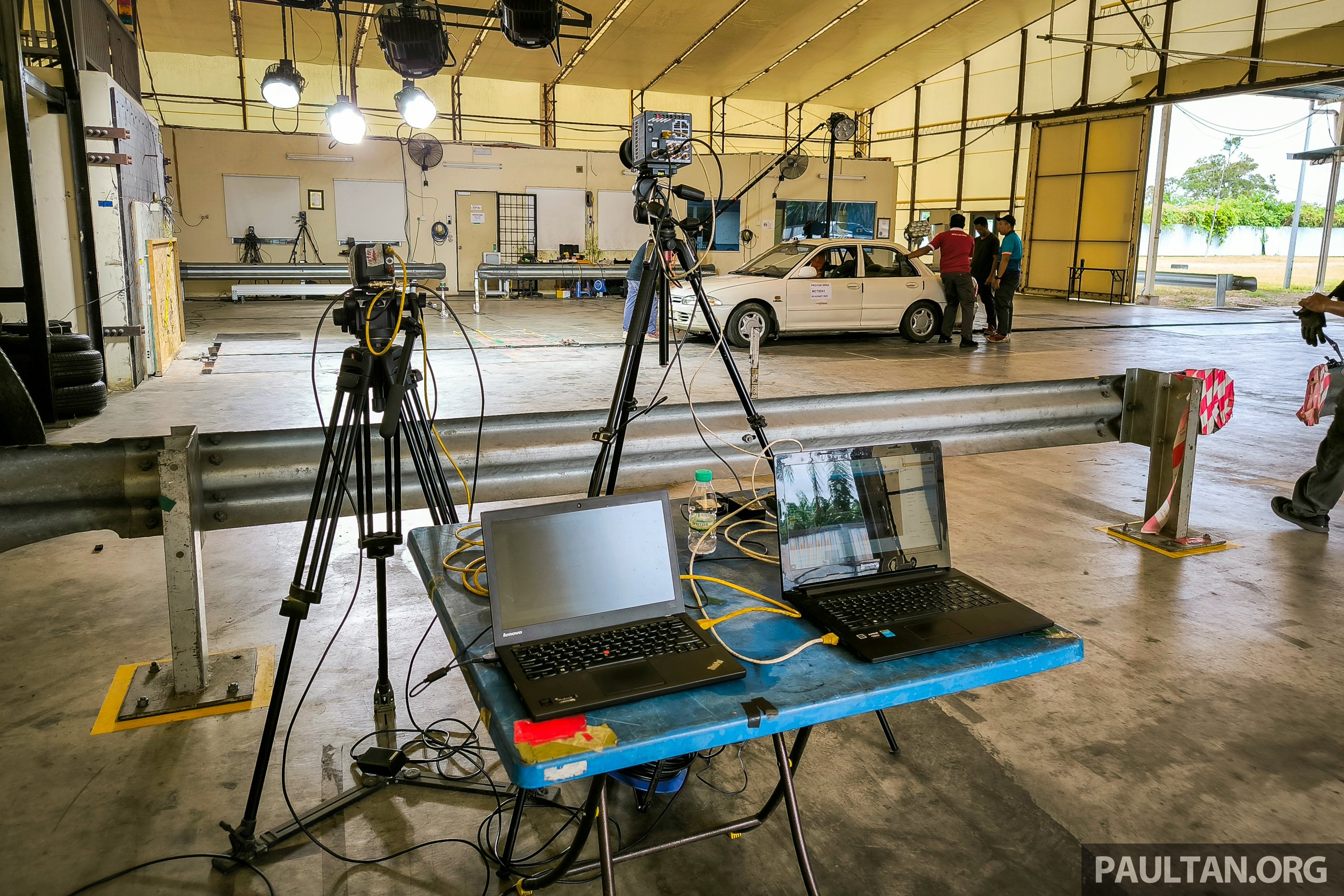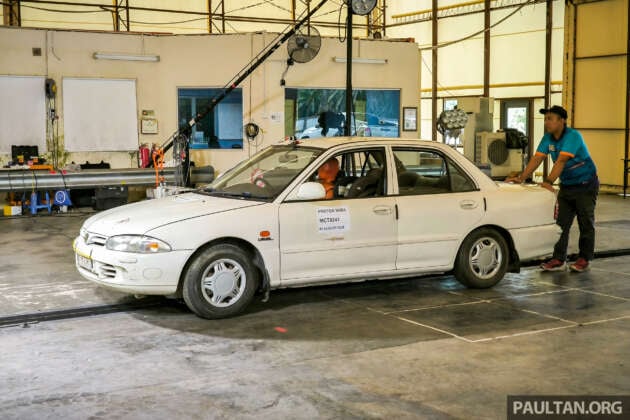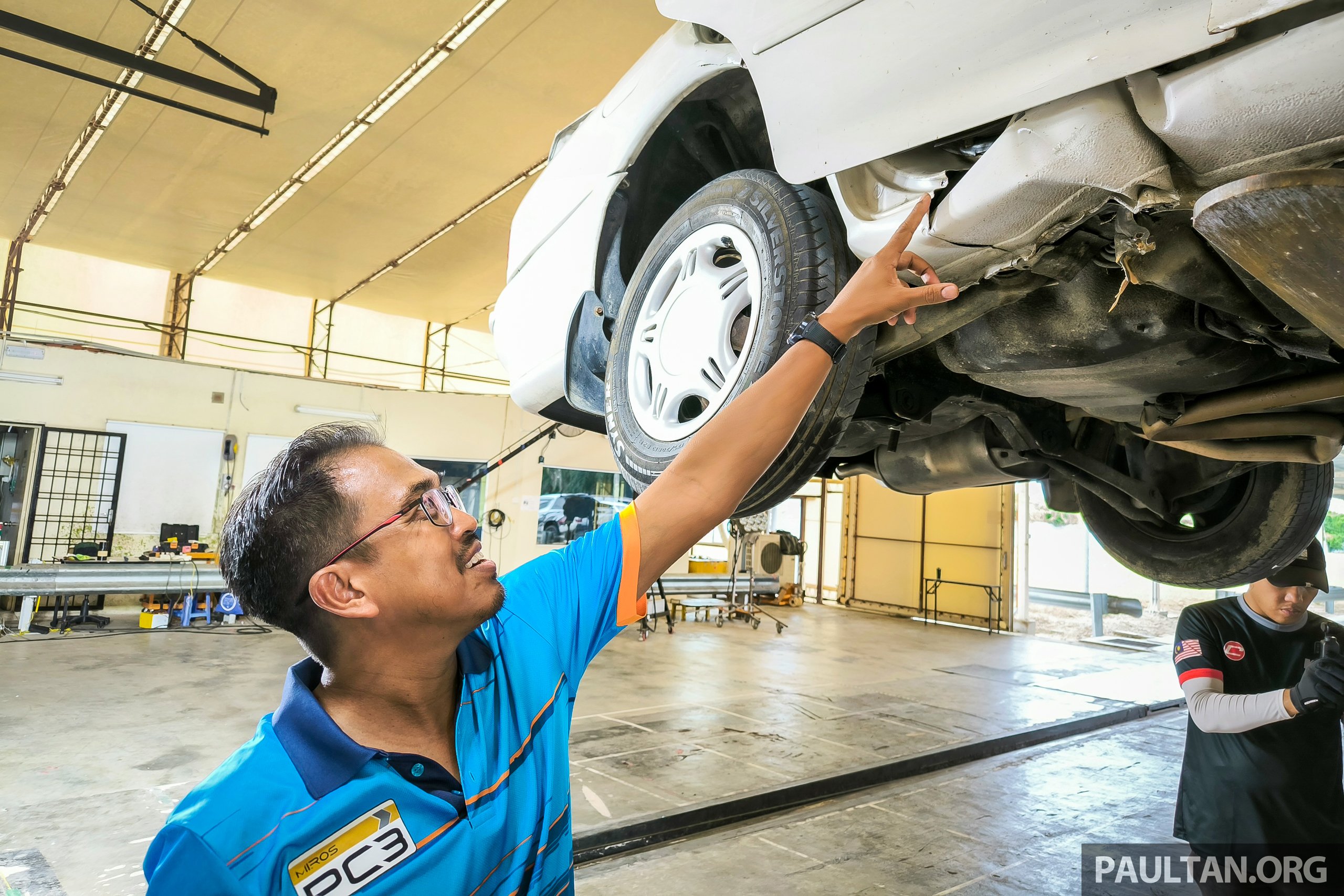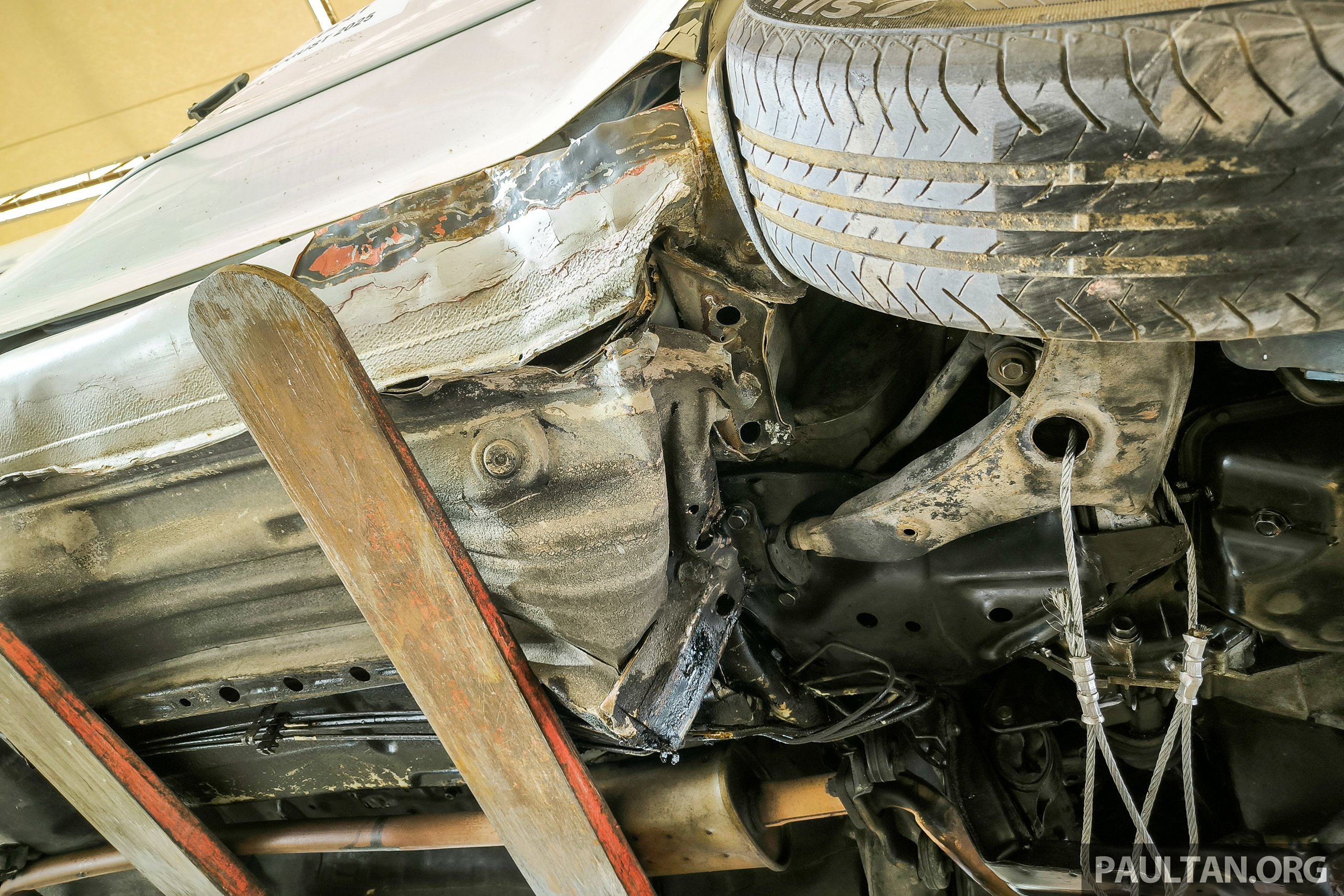This isn’t a straightforward piece to jot down though the premise is easy. Previous automobiles are merely not protected for you and your loved ones. They arrive nowhere close to to trendy crash security requirements and any new automobile, even the most cost effective ones on sale right now, are gentle years forward in occupant security. To your personal sake, get a brand new automobile.
The above paragraph is a reality, one which was seared into my thoughts earlier this week after we witnessed the crash check of a Proton Wira, reside on the Miros PC3 lab. Understanding one thing in concept is one factor, seeing the carnage with your personal eyes is one other altogether.
Right here’s some background. This isn’t an official ASEAN NCAP check and there’s no score to be earned, though we’re in the identical facility in Ayer Molek, Melaka that arms out the stars and factors we’re acquainted with. The identical high-speed cameras and lights, the identical background, the identical gear and the identical wrecking crew, however with a vastly totally different topic.
One which’s from the previous. We have now right here a 1993 Proton Wira from the primary batch of the tremendous fashionable sedan primarily based on the fourth-generation Mitsubishi Lancer. This white 1.5 GL was donated by Hezeri Samsuri, veteran motoring journalist and founding father of Careta. Our pal bought the Wira with the intention to revive it, however the man has method too many autos to work on/play with, and had an excellent thought.
Crash it! He acquired in contact with Miros and right here we’re with a few different media shops Hezeri invited to witness the loss of life of a automobile in actual time. He solely has one Wira to present so there’ll solely be one crash – the complete frontal – as an alternative of the standard entrance offset and NCAP’s gamut of assessments. Additionally, we’re utilizing essentially the most primary of dummies (that are very pricey issues by the way in which), as the primary intention is to point out the injury to the automobile.
After a nervous wait from the viewing platform, we heard the countdown after which the sound of the Wira arrowing into the constructing at a recorded pace of 62 km/h (64 km/h is the norm). It hit the wall with a muted ‘doosh’ sound, making a combustion of glass and trim.
We rushed down to examine the now-departed Wira (RIP, hero), and what instantly struck me wasn’t the fully crushed 1/3 of the three-box sedan, however the truth that the remainder of the Proton – now minus the engine bay – appeared visibly shorter than the automobile that was alive moments in the past.
Maybe not as pronounced in footage, however the wheelbase of the sedan has been shortened, and the wrecked physique seems barely curved, like a Mercedes-Benz CLS. The crew later lifted the wreckage and pointed us to the damaged weld factors on the undercarriage.
This compression of the passenger cell must be the most important distinction between a contemporary automobile and an older automobile constructed within the period the place crash assessments weren’t a factor. The engine bay of a contemporary automobile acts as an enormous crumple zone, designed to nicely, crumple upon affect, absorbing the power of the crash, so to talk. With out this large, precise ‘absorber bumper’ (bear in mind the Nissan Sunny 130Y?) the huge power is transferred to the cabin, as demonstrated by this Wira wreck.
The most secure automobiles on the street right now are intact aft of the A pillars, that are bolstered to face up to the entrance offset crash check. The latter, the place just one facet of the automobile’s entrance finish makes first affect, is a more durable check than the complete frontal, the place the affect is unfold over a bigger space. This is the reason you don’t see any A pillar injury right here, however surprising scenes greeted us upon nearer inspection.
And not using a crumple zone, the affect of the collision pushed the firewall – and dashboard – again into the cabin, drastically lowering what consultants name the ‘cabin survival zone’. The grownup driver dummy’s legs are pushed again to the seat base and his foot is flipped again in direction of his shin. The steering wheel is now not spherical as a result of the dented half ‘went into’ the dummy’s stomach.
Attainable affect areas have been painted to actually spotlight contact factors with the dummy, and we see the colors on Mr Orange’s forehead, nostril and chin – with no airbag to cushion the blow, the dummy’s whole face collided with the stiff steering wheel. There’s additionally color on the passenger facet of the dashboard, which implies that the top of the kid – secured in a baby seat – smacked the sprint. Sure loss of life in the event that they have been each human, we have been instructed.
The ultimate nail within the coffin is that each one 4 doorways couldn’t be opened by a crew of 5 grown males, who had instruments and no scarcity of expertise with mangled automobiles. The compression of the passenger cell should have sealed the doorways in place. If this was an actual accident, it will be inconceivable for passers-by to assist extricate the occupants earlier than the bomba arrive with their Jaws of Life. The doorways of contemporary automobiles are designed to be openable within the occasion of a crash.
Talking of doorways, in the event you occur to recollect the facet affect beams touted by Proton for the Wira (a brand new function that wasn’t within the Iswara), they’re current – we peeked into the crevice and noticed the horizontal metallic tubes.
As confessed in the beginning, this wasn’t a straightforward story to jot down as a result of fairly a couple of of us love previous automobiles right here at paultan.org. PT BM colleague Farid drove to Melaka in a slammed Volvo 240 and yours really’s earlier two-door automobile was a Toyota MR2 three years older than the departed Wira. Many people automobile guys have dream automobiles from that period, or on the very least, a fond reminiscence of the household saloon that we grew up in. They don’t make them like they used to, proper?
Certainly! Right this moment’s automobiles, even essentially the most primary ones, have been designed to satisfy trendy crash security requirements that weren’t there within the Nineteen Nineties, which implies that even the Perodua Axia/Bezza or right now’s Proton Saga – small and light-weight as they’re – will maintain up higher in a crash than previous automobiles – there aren’t any two methods about it.
And whereas we’re utilizing the Wira for instance, it will be the identical for a Honda Civic EG, Toyota Corolla SEG or any mannequin from the period – the notion of ‘previous automobiles are extra strong’ or that they’re manufactured from ‘more durable metal’ is apparent incorrect.
Are we telling you then to ditch the previous automobile and substitute it with a recent rent buy mortgage ASAP? No, however if you possibly can afford a contemporary automobile to function household transport, security is at all times cash nicely spent. In case you’re protecting an previous automobile for fanatic or sentimental causes, get pleasure from your previous buddy responsibly with the realisation that its shell gained’t supply a lot safety in a crash. Make sure that your brakes and tyres are in good situation and don’t take an excessive amount of liberties. See the Wira’s loss of life blow from all angles within the video beneath.
GALLERY: 1993 Proton Wira frontal crash check
GALLERY: Trendy automobile wrecks at Miros PC3
Trying to promote your automobile? Promote it with Carro.











